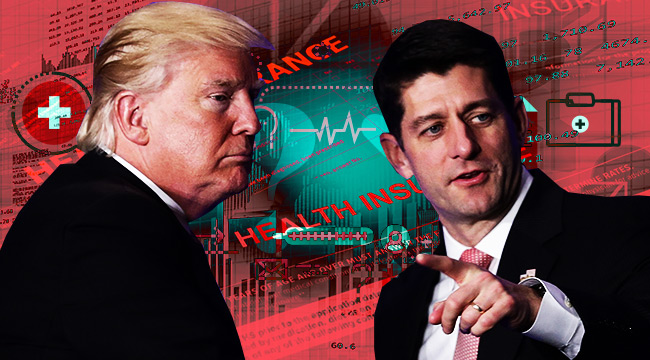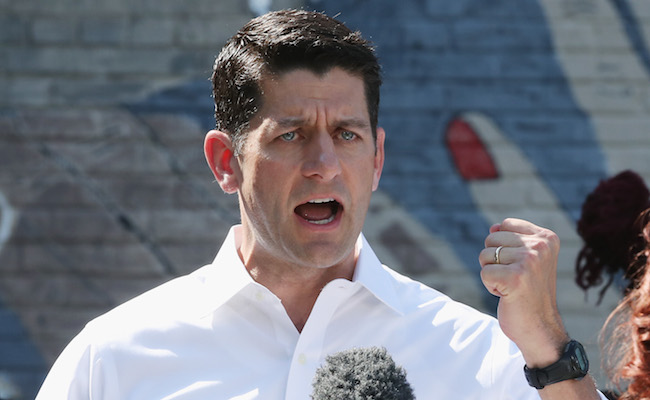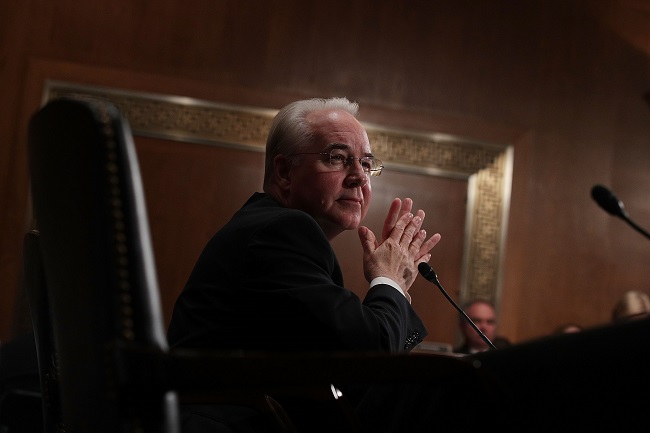
Update: On February 16, the New York Times reported that Republican congressional leaders had proposed the outline of an Affordable Care Act/Obamacare (ACA) replacement plan that had the blessing of President Trump. According to that report, the main elements of the plan fall in line with the long-favored elements that are discussed in this article. Specifically, the end of progressive tax credits, the institution of age-based ones, health savings accounts, and deregulation that would allow people to purchase insurance across state lines.
Money for high-risk pools was also mentioned, as was a general easing of the coverage standards put in place by the ACA. The biggest addition will impact Medicaid and already strained state budgets across the country, which we’ll address at the bottom of this article.
Approximately twenty million people have moved away from the ranks of the uninsured and improved their prospects for a healthier and more financially stable life because of the Affordable Care Act/Obamacare (ACA), but it hasn’t been perfect.
When the Obama administration was putting together its legislation, it was wrought with compromises, and like any massive remedy, it has had a different impact on different people. In some states, Medicaid expansion has been walled off, and some have not been able to keep their doctors or their existing insurance, despite promises to the contrary.
More recently, premium increases have driven a lot of the antipathy toward the ACA effort, allowing a negative view of the legislation to take hold. It’s important to push past the broad and hysterical claims, though. For one, employer-sponsored plans are how most Americans get their coverage, and while their cost has continued to grow since the ACA, the increases have been less sharp year to year than they were before the ACA. In 2017, the premium cost for a large employer-sponsored plan is expected to go up 6% from last year. Which is more than inflation but far less than what people will face on the ACA exchanges for their private health insurance premiums.
Though it varies greatly from state to state, premiums are expected to rise by 22% on average (with subsidies rising, as well). Why? In part, it’s because the high cost of insuring the sick and covering prescription drugs (whose costs are ballooning with little help in sight) is impacting the insurance companies who pass the hurt on to consumers (even though that hurt isn’t always the case or always evident in the bottom line).
All of these problems are made more prominent because 18-34-year-olds never signed up for coverage at the level needed. Apparently, so-called, “Young Invincibles” are undeterred by the risks of sudden illness or the piddly mandate penalty that is supposed to convince them to sign up and offset the cost of sick people who actually use their benefits and cost the insurance companies.
Is all of this fixable? Conceivably, but while Sen. Lamar Alexander (R-Tennessee) and Sen. Orin Hatch (R-Utah) have gently (and recently, in an about face) broached the word “repair,” and while a Kaiser survey showed that more people view lowering costs as a priority than they do a repeal of the ACA, adapting Obamacare seems like the least likely result.
While the end of the ACA is almost certain, though, there is a lot of uncertainty about what comes next, and only a few staples seem to be consistently discussed among the key players in the effort to find a new way on healthcare. Here’s a look at those elements and how they could impact you.
Purchasing Insurance Across State Lines
The idea here is pretty straightforward (and something that is minorly in play already and majorly ineffective according to a Georgetown study): If you make insurance from every state available to everyone, you lessen some of the red tape. Theoretically, that could lead to more competition (which would be welcome in the five states that are each only serviced by one insurance company) and lower prices. But it’s not that simple, and you don’t get something for nothing.
Insurance companies negotiate with a network of providers — this helps to establish the cost of procedures, testing, and care that you get charged. If you live in Ohio and bought into a plan based in Delaware right now, though, chances are that insurance company wouldn’t have an agreement in place with your local Ear, Nose, and Throat doctor. They have to build those relationships, and that is a costly endeavor for the insurance companies. Which, if time has taught us anything, means it would likely be costly for consumers as well.
But what about that “red tape?” It’s a broad term, but a lot of that has to do with the standard of care that is deemed appropriate by each state. We’re already seeing how wildly that can swing. In Minnesota, for example, there is a proposal that would strip away a lot of needed coverage. This is being done in an effort to reduce premiums.
Think about it this way: While you may like that there is a minimum wage — and, thanks to the ACA, there is something like that for health insurance with Essential Health Benefits — you probably want a job that pays a bit more. You probably want health insurance that covers cancer treatment, too. Random illnesses being as random as they are, and all that.
High-Risk Pools

President Trump has said repeatedly that a replacement plan would “cover everybody,” but the specifics have been in short supply. One method of covering “everybody,” including those with pre-existing conditions — who, prior to the ACA, were susceptible to sky-high premiums, exclusions for those pre-existing conditions, an inability to get coverage, and crushing medical debt — is high-risk pools. These are favored by Speaker of the House Paul Ryan and Health and Human Services-designate (and soon-to-be former Congressman) Tom Price as an ACA replacement option, but they aren’t a new idea, existing in approximately 35 states before the ACA.
According to a Kaiser study (hat tip to TPM), “nearly all” of these state pools came with a 6-12 month waiting period to get coverage for people’s pre-existing conditions. That means up to a year without coverage for diabetes medicine and having to go out-of-pocket to get costly heart treatments if you were so afflicted. The pools also came with predictably massive premiums and deductibles, and some had annual and lifetime caps on specific types of coverage. So, basically, people had insurance to help get through cancer treatment, but only to an arbitrary point prescribed by the insurance company.
On the surface, the appeal of bringing back the high-risk pools is that it would segregate the sick from the not sick, allowing the cost of covering the latter to reduce by virtue of not being tied to the former.
If cost differences between these plans and those available to non-high-risk customers and the quality of care was on par with those plans (and what people have now under the ACA) then it would be easy to see the merits of the strategy. But, again, the track record for exactly that kind of high-risk pool is not great. Even after they were seriously enhanced following the ACA passage in 2010.
As Kaiser points out, there was a four-year period from 2010 to 2014 where people with pre-existing conditions were part of a government-managed program called the Pre-existing Condition Insurance Plan (PCHIP). Premiums were on par with other plans, there was no annual or lifetime dollar cap, and no waiting period. $5 billion was set aside to help with costs but it got devoured quickly, with claim costs running at 600% of premiums by 2013, triggering a freeze on enrollment.
That example isn’t meant to say that a high-risk plan with all those bells and whistles couldn’t work, just that it would be costly. And Ryan’s proposal seems to fall short.
During a January CNN Town Hall forum, Ryan pegged the number of people who would qualify for the high-risk pool at 8%, but that number seems like a low estimate.
From Kaiser’s report on pre-existing conditions and medical underwriting:
We estimate that 27% of adult Americans under the age of 65 have health conditions that would likely leave them uninsurable if they applied for individual market coverage under pre-ACA underwriting practices that existed in nearly all states. While a large share of this group has coverage through an employer or public coverage where they do not face medical underwriting, these estimates quantify how many people could be ineligible for individual market insurance under pre-ACA practices if they were to ever lose this coverage.
It’s an open question who determines what would and wouldn’t be a pre-existing condition in a post-ACA environment. Are we talking about major chronic illnesses like diabetes or are people getting rejected because of hay fever (which did happen in the past)? If it’s as broad as it was before, Ryan’s numbers seem inadequate. Which means that the $25 billion (spread over 10 years) that he proposed to fund high-risk pools would also be inadequate. Incredibly so, if you believe University of Chicago School of Social Service Administration professor Harold Pollack, who told McClatchy that “$30 billion to $50 billion a year is needed to fully fund the pools.”
What happens when a new high-risk pool demands more resources? Will we see benefits get chipped away? Will we see people get priced out of the system?
Tax Credits
Back in January, Trump told The Washington Post that, with regard to health insurance, the “philosophy in some circles that if you can’t pay for it, you don’t get it. That’s not going to happen with us,” but it’s an open question how Trump and the congressional Republicans plan to help people pay for their insurance.
Tax credits are a popular answer to that question as they are designed to help both individuals and families afford their coverage. In fact, the ACA already offers a refundable tax credit to help both individuals and families afford coverage, so you’d think this would be a slam dunk for compromise. The thing is, the ACA issues subsidies/credits by way of a sliding scale based on income. The plan currently being floated bases these credits on a person’s age, not their income. Ryan told Charlie Rose that this policy would allow for assistance regardless of income.
Such a change would be a big help for families who make too much to qualify for subsidies under the ACA, however, it could hammer lower-income families who are completely dependent on subsidies to pay their premiums, since they might need more than the average amount of assistance.
Health Savings Accounts

Health Savings Accounts (HSAs) let people contribute some of their pre-tax income into a kind of rainy-day fund for medical emergencies that can be used without incurring a tax or a penalty.
The problem is that HSAs tend to go hand-in-hand with high-deductible insurance plans, which means individuals have to pay more out-of-pocket for their medical care. This means that it’s really more of an option for those with disposable income, not so much those that are in the lower income bracket.
Changes To Medicaid
As reported by the New York Times, Republican congressional leaders plan to make good on the long-held desire to greatly alter the terms of the Medicaid expansion that provides coverage to approximately 12 million previously uninsured low and middle-income Americans.
Under the reported terms of the proposal, the federal government’s share of the costs associated with the expansion (in the 31 states that opted in) would eventually drop from 90% to around 50% (which is in-line with the standard federal payout for Medicaid). But what’s the effect of punting the cost to the states? Especially when, according to Pew, “At least 30 of them have budget shortfalls.”
We’ll have more on how this proposal could impact Medicare (and the approximately 70 million people that it covers) when more details are released.
Where Things Stand Right Now
The ask is pretty extreme. Republicans are looking for an alternative to the ACA that pleases voters, a President with broad demands, and which both respects the bottom line and can be sold as an improvement for something that, while not universally adored, has ample support in Congress and with voters. Perhaps that’s why it’s taking so long for a plan to come together.
Based on their track record, the above elements seem like an ill fit in terms of delivering effective and affordable care to those with pre-existing conditions and those that don’t have the financial wherewithal to afford coverage, but efforts to remake them with those things in mind may change that assessment. For now, though, we’ll all have to watch and wait.
